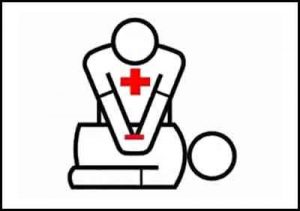- Home
- Editorial
- News
- Practice Guidelines
- Anesthesiology Guidelines
- Cancer Guidelines
- Cardiac Sciences Guidelines
- Critical Care Guidelines
- Dentistry Guidelines
- Dermatology Guidelines
- Diabetes and Endo Guidelines
- Diagnostics Guidelines
- ENT Guidelines
- Featured Practice Guidelines
- Gastroenterology Guidelines
- Geriatrics Guidelines
- Medicine Guidelines
- Nephrology Guidelines
- Neurosciences Guidelines
- Obs and Gynae Guidelines
- Ophthalmology Guidelines
- Orthopaedics Guidelines
- Paediatrics Guidelines
- Psychiatry Guidelines
- Pulmonology Guidelines
- Radiology Guidelines
- Surgery Guidelines
- Urology Guidelines
Push Hard, Push Fast, Do not stop-JAMA study details proper CPR steps

Push hard Push Fast, Do not stop- JAMA studyd proper Cardiopulmonary Resuscitation steps.
The combination of 107 compressions per minute and a depth of 4.7 cm may be the optimal combination of compression rate and depth during Cardiopulmonary Resuscitation (CPR), identified a study published in JAMA Cardiology.
Cardiopulmonary Resuscitation is a life-saving first-aid technique used in many emergencies such as heart attack and situations like near-drowning. Inadequate compression rate and depth are associated with worse outcomes. Previous studies of basic cardiopulmonary resuscitation (CPR) show that both chest compression rate (CCR) and chest compression depth (CCD) each are associated with survival probability after out-of-hospital cardiac arrest. However, an optimal CCR-CCD combination has yet to be identified, particularly with respect to age, sex, presenting cardiac rhythm, and CPR adjunct use.
Considering the requirement, a team of scientists from The University of Texas Southwestern Medical Center and University of Minnesota Medical School conducted a cohort study where they used data collected between June 2007 and November 2009 from a National Institutes of Health (NIH) clinical trials network registry of out-of-hospital and in-hospital emergency care provided by 9-1-1 system agencies participating in the network across the United States and Canada (n = 150). The study sample included 3643 patients who had out-of-hospital cardiac arrest and for whom CCR and CCD had been simultaneously recorded during an NIH clinical trial of a CPR adjunct. Subgroup analyses included evaluations according to age, sex, presenting cardiac rhythm, and application of a CPR adjunct. Data analysis was performed from September to November 2018.
Key Findings
- The identified optimal CCR-CCD for all patients was 107 compressions per minute and a depth of 4.7 cm.
- When CPR was performed within 20% of this value, survival probability was significantly higher.
- The optimal CCR-CCD combination remained similar regardless of age, sex, presenting cardiac rhythm, or CPR adjunct use.
- The identified optimal CCR-CCD was associated with significantly higher probabilities of survival when the CPR device was used compared with standard CPR, and the device’s effectiveness was dependent on being near the target CCR-CCD combination.
"The findings suggest that the combination of 107 compressions per minute and a depth of 4.7 cm is associated with significantly improved outcomes for out-of-hospital cardiac arrest. The results merit further investigation and prospective validation." concluded the authors.
For reference, click on the link

Disclaimer: This site is primarily intended for healthcare professionals. Any content/information on this website does not replace the advice of medical and/or health professionals and should not be construed as medical/diagnostic advice/endorsement or prescription. Use of this site is subject to our terms of use, privacy policy, advertisement policy. © 2020 Minerva Medical Treatment Pvt Ltd